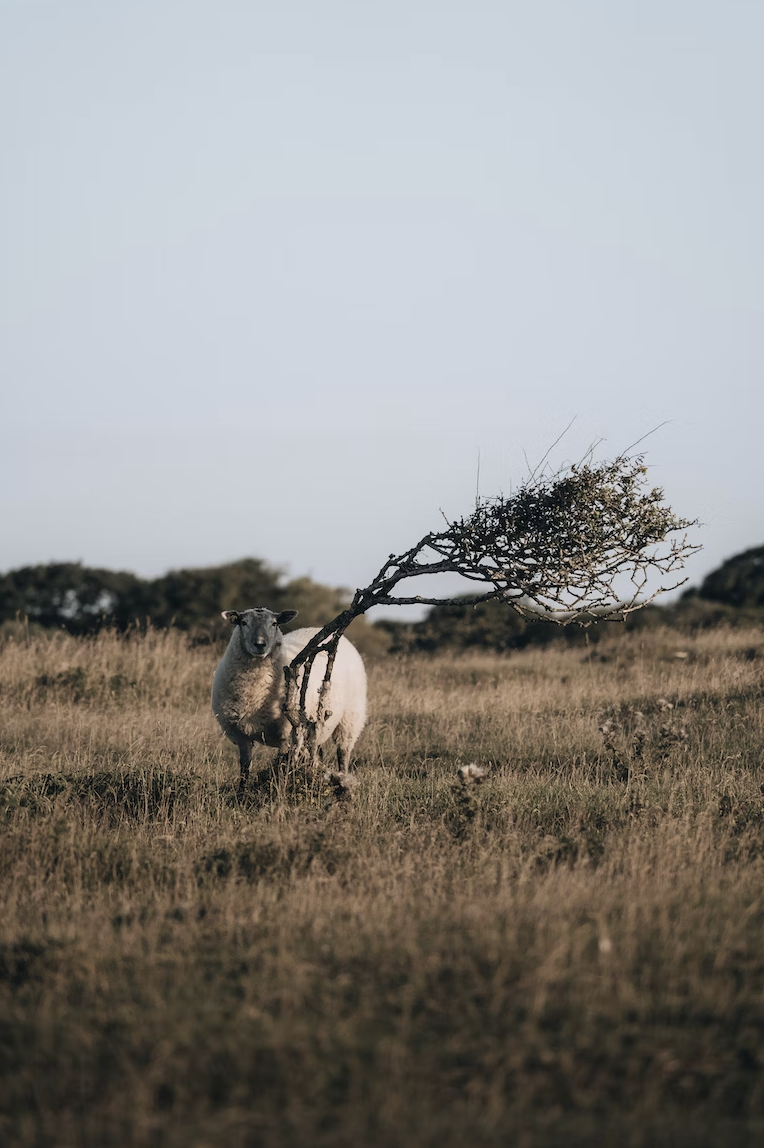Agriculture is deeply dependent on the weather. In other words, it is highly sensitive to climate change. This ultimately affects food security: can enough food be grown to feed a growing population in a world also affected by climate change?
“This is a natural concern. Both globally and here in Denmark, we will see a number of negative effects of climate change, there is no doubt about that. Adaptations will therefore be needed if we want to maintain the productivity we know in Danish agriculture,” says Professor Mathias Neumann Andersen from the Department of Agroecology at Aarhus University, who has led the new report “Knowledge synthesis on climate change adaptation and agriculture”.
Milder winters and longer growing season
Although the climate has already changed and will change further in the future, the prospect for Danish agriculture is not as negative as in many other parts of Europe and the world.
“The global average temperature has risen by 0.8 degrees over the past 50 years, in Denmark the temperature rise has been 1.8 degrees. The temperature is currently rising by about 0.5 degrees per decade. For us in Denmark, this means milder winters with less snow cover and fewer situations with very low temperatures,” explains Professor and Head of Department Jørgen E. Olesen from the Department of Agroecology.
Climate change in Denmark means longer growing seasons, within the last 50 years the growing season has increased by 18 days. With the milder winters and longer growing season also comes a greater amount of precipitation, explains Jørgen E. Olesen explains.
“We get more rain, but not more rainy days. The number of hours of sunshine has also been steadily increasing, and we have seen the biggest increases in temperature in winter, and we expect the same in the future.”
Unlike, for example, the southern countries of the EU and many developing countries, which will be affected by large temperature increases and drought, Danish agriculture can look forward to a future with a growing season that increases by 6.5 days per decade and perhaps even the possibility of growing new crops or even harvesting twice in one season, not least for vegetables.
Weeds, pests, diseases and flooding will be bigger problems in the future
In general, the productivity of many crops will increase in Denmark due to the longer growing season, but with higher temperatures come new diseases and pests.
“The relationship between climate and the occurrence of weeds, diseases and pests is complex. It is to be expected that the infection potential of e.g., yellow rust and late blight will increase, just as pests such as aphids will be able to thrive better due to milder autumns and winters,” explains Senior Researcher Lise Nistrup Jørgensen from the Department of Agroecology.
Breeding more resistant and genetically diverse varieties may be a solution, and according to the researchers, various cultivation techniques could be used to accommodate climate-induced changes in weeds, diseases and pests.
Increased drainage and irrigation are mentioned as possible measures to deal with the major problems that will arise, especially flooding and wet soils in the spring and drought in the summer. Similarly, conservation agriculture and organic farming are to some extent considered to be more resilient in the face of drought, for example.
Less organic matter in the soil
Rising temperatures are bad news for soil quality in the long term. Mineralisation of organic matter is promoted, and a lower soil organic matter content will negatively affect cultivation.
“However, a lower soil organic matter content can be counteracted by increased plant production, such as perennial crops and more cover crops, which will add carbon to the soil,” explains Professor Lars J. Munkholm.
Adapting the cropping system, for example with more perennial crops, will not only have a positive impact on soil quality, but it will also have a positive impact on soil fauna.
Preventing livestock heat stress and increased insect pressure
Modern livestock have a high sensitivity to heat stress, and therefore researchers expect that animals will be negatively affected by rising temperatures and, in particular, an increased number of heat waves.
“This applies to both barn and outdoor animals. Warmer temperatures affect animal welfare, health and a number of production parameters,” says Professor Jan Tind Sørensen from the Department of Animal and Veterinary Sciences at Aarhus University.
In addition, there will be an increased number of insects, and more species will be added as temperatures rise. This gives rise to a greater spread of insect-transmitted diseases.
“In general, there is a risk of deterioration of the stable climate, because it becomes more difficult to keep the temperature down and within the tolerance of the species. This can impair animal welfare, feed utilisation and reduced growth and production,” says Jan Tind Sørensen.
Solutions such as climate zones and sprinklers may be solutions in housing systems with cows and pigs, while shade from trees or agroforestry may be the future for outdoor livestock. According to Jan Tind Sørensen, feed production is also affected by climate change.
“Livestock production is deeply dependent on a constant supply of high-quality feed. However, in the climate of the future, there is a high risk, especially for outdoor animals, that feed supply will be impaired by, for example, droughts.”
Adaptation to climate change is possible with innovative technical housing solutions that can keep temperatures in the stables down, and agroforestry systems may be the way forward for outdoor livestock. In addition, genetic selection in breeding will play an important role in the long term to make future livestock more climate resilient.
Adaptation to climate change is needed
Although the agricultural sector in southern Europe and elsewhere in the world will be far more challenged by climate change than Denmark, we still need to adapt. In addition, agriculture must fulfil a number of sustainability goals, which, according to the researchers, is also a major challenge that comes on top of adapting to climate change.
“The need for food and bioenergy is increasing globally. This is partly due to the growing population. At the same time, agriculture must contribute to a wide range of environmental policy objectives, including reducing greenhouse gas and nutrient emissions, minimising pesticide use and biodiversity. Here we have provided our suggestions for possible adaptation strategies that can help agriculture not only to become more resilient and climate resilient, but also to take into account the set sustainability goals,” says Mathias Neumann Andersen.
In the report “Knowledge Synthesis on Climate Change Adaptation and Agriculture“, you can read much more about possible climate change and, not least, how it will affect many different parts of agriculture. You can read about the adaptation options and technologies that can help ensure continued high production in Danish agriculture.


